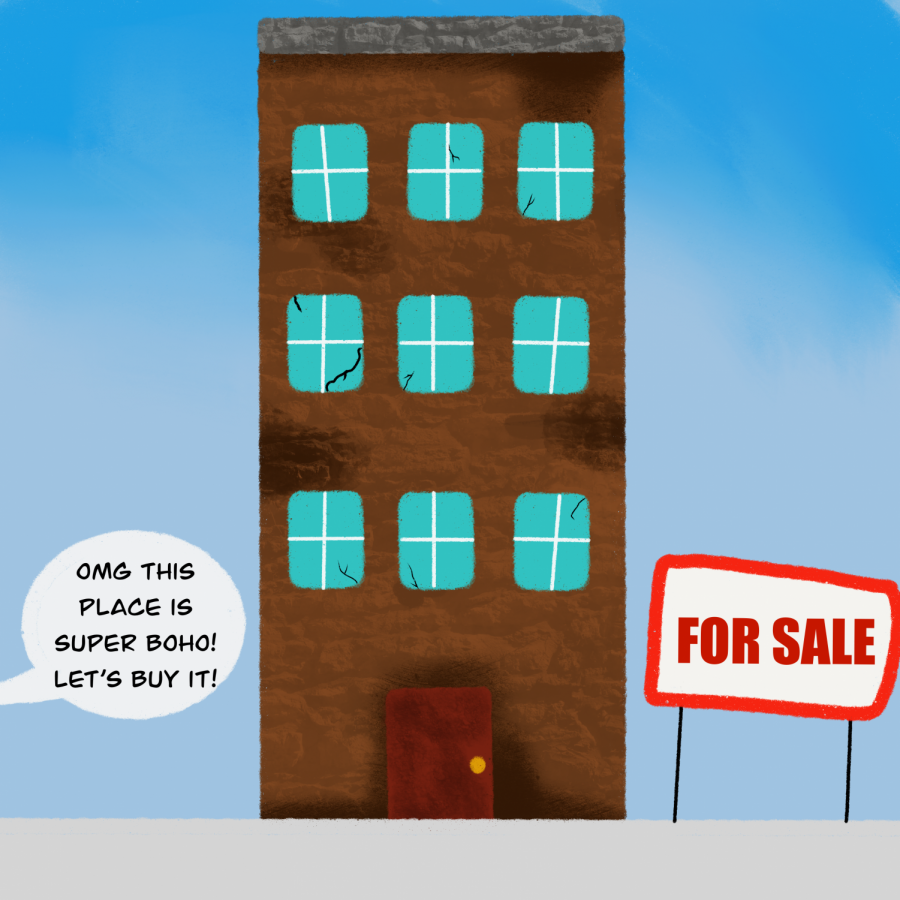Opinion | Save Pittsburgh, end gentrification
October 13, 2020
Ask a group of Pitt students what their favorite neighborhoods in Pittsburgh are, and you’re sure to hear about Bloomfield and Lawrenceville. These neighborhoods are known for their charm and appeal, and they have plenty of coffee shops and small businesses that college students and adults enjoy.
But these neighborhoods, along with others in the City, have been and still are being gentrified. Historically low-income neighborhoods are seeing an economic and demographic shift as real estate investment and development increases, causing wealthier, usually more educated, residents to move in.
Some may argue that gentrification is a positive thing, as it can improve the amenities and aesthetics of a neighborhood or city, but this is not the case in Pittsburgh. Gentrification in Pittsburgh forces longtime residents to leave their neighborhoods and communities, and it threatens to ruin the City’s culture and diversity.
When a neighborhood becomes subject to gentrification, the average income of the area usually increases, as do rent prices and the prevalence of luxury apartments. The combination of these elements can severely disrupt the original character of a neighborhood by introducing new housing or apartments that attract more affluent residents and by introducing new businesses that may force preexisting businesses, especially small businesses, to work harder to continue making a profit.
Pittsburgh is one of the most intensely gentrified cities in the United States, with 20% of census tracts in the lower 40% of family incomes and home values undergoing gentrification between 2000 and 2013. Seattle and Portland, Oregon, also saw gentrification in 20% of their neighborhoods. Pittsburgh’s population is about 295,000 people, making it a significantly smaller city than both Seattle and Portland.
The main issue with gentrification, at least in my mind, is not so much the presence of new coffee shops decorated in the mid-century modern style. The issue is that when a neighborhood is gentrified, and when businesses and luxury apartment buildings start to move in and drive real estate values through the roof, the rent for surrounding houses and apartments goes up. This makes neighborhoods less affordable, which in turn forces out longtime residents who no longer have the means to afford the new cost of living.
For example, rising rent prices in Pittsburgh’s Polish Hill neighborhood made it difficult or impossible for some residents to continue living there. Rising housing costs are especially difficult for people who’ve lived in the neighborhood for a long time, and those who have fixed or low incomes. Oftentimes, this forces them to leave the neighborhood to find more affordable housing.
This shows just how widespread of an issue gentrification is in Pittsburgh — it reaches beyond just East Liberty and Lawrenceville, two neighborhoods people commonly cite when discussing gentrification.
Of course, there’s no way to stop neighborhoods from changing, and if it’s done correctly, updating a neighborhood can serve residents without gentrifying the area. Alexis Miller, former chair of the Polish Hill Civic Association and housing advocate for the neighborhood, told Pittsburgh City Paper in 2017 that Polish Hill has room for some private development, but developers should reach out to the PHCA before beginning any projects that would drastically alter the neighborhood.
“It’s within developers’ best self-interests to meet with community groups,” said Miller. “But if they choose not to, then that raises questions on their intentions to actually better the neighborhood.”
Miller is absolutely correct in her assertion, especially because meeting with the community where a company plans to build a development is one of the best ways to curb gentrification. According to the National Low Income Housing Coalition, taking measures such as the ones Miller described is the best way to stop neighborhood revitalization from turning into gentrification.
The difference between gentrification and revitalization is that gentrification only benefits a limited portion of the population — most often the wealthy, well-educated white people who move into gentrified areas. Revitalization is a way of improving neighborhoods that benefits all residents and works to guide the community toward a better neighborhood for all, regardless of race, income or education level.
The Pittsburgh City Council should take note of this and apply the knowledge when approving multimillion-dollar developments. Thus far, the Council has not proven that it is actively striving to end gentrification in the City, instead clearing the way in fall 2019 for a $50-million development on the site of the former Penn Plaza Apartments in East Liberty.
This development comes in spite of community backlash and controversy. Former residents of Penn Plaza protested the development, telling the Council that it was allowing gentrification and calling for an affordable housing development to be built instead. But the Council did not listen, instead committing to a court-stipulated solution, mandating that 70% of the tax revenue the new development generates will be split, with half going toward public infrastructure and the other half for affordable housing and improvements to nearby Enright Park.
This is not a satisfactory solution, nor will it solve the issue of gentrification in East Liberty or anywhere else in Pittsburgh. The City Council needs to consult with the community where a private development is being proposed, and it must listen to what the community says will serve them best. It’s the best way to end gentrification in the City, and the only way to preserve the character and culture of Pittsburgh’s neighborhoods.
Paige writes primarily about environmental policy and politics. Write to her at [email protected].








